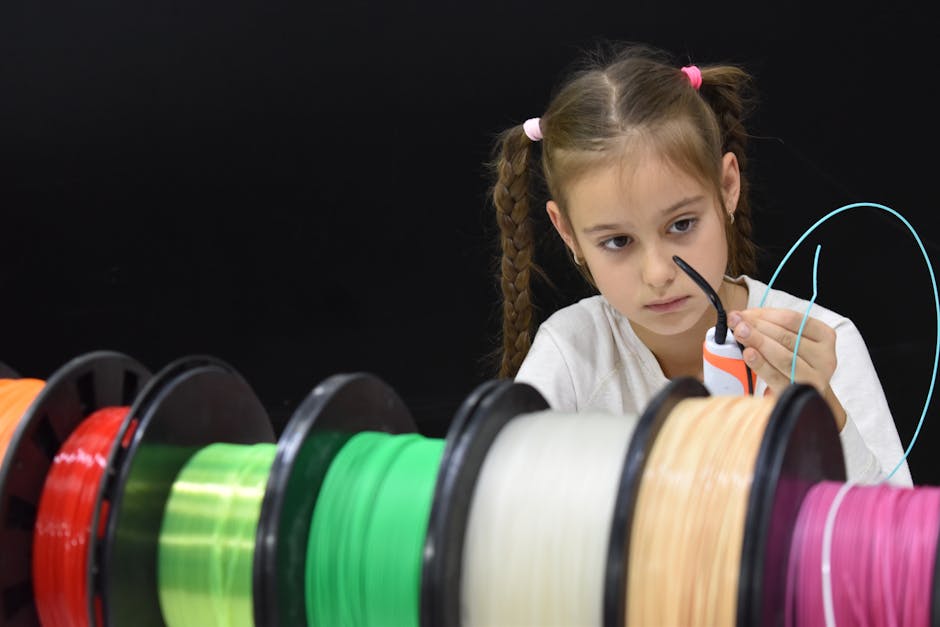No products in the cart.
3D Printing in Classrooms: A Revolution in Learning
The classroom 3D printing market is set to double by 2032, fueled by advancements in STEM and EdTech. Discover how this technology is reshaping education.
In the vibrant world of education, the hum of 3D printers is becoming the symphony of innovation. Picture this: a classroom where students not only consume knowledge but create tangible, three-dimensional representations of their ideas. This isn’t a scene from a futuristic movie. It’s happening now, and according to recent reports, the classroom 3D printing market is projected to double by 2032, fueled by a surge in STEM (Science, Technology, Engineering, and Mathematics) and EdTech innovations.
The classroom landscape is evolving. Gone are the days when students passively listened to lectures. Today, they are engaged in hands-on learning that stimulates creativity and critical thinking. With the integration of 3D printing technology, educators are unlocking new dimensions of learning. As students design and print their projects, they are not just learning about geometry or physics; they are applying these concepts in real time, bridging the gap between theory and practice.

This shift towards experiential learning is more than just a trend—it’s a revolution. Schools around the globe are beginning to recognize the potential of 3D printing. From creating prototypes for science fairs to designing models for history projects, the applications are limitless. Educators are embracing this technology not merely as a tool but as a catalyst for a new way of thinking.
But what’s driving this remarkable growth? The answer lies in several intersecting factors. First and foremost is the growing emphasis on STEM education. Governments and educational institutions are increasingly prioritizing STEM initiatives, recognizing that these fields are critical for future job markets. As a result, resources are being allocated to equip classrooms with 3D printers, making them accessible to a broader range of students.
Governments and educational institutions are increasingly prioritizing STEM initiatives, recognizing that these fields are critical for future job markets.
Moreover, the EdTech boom is playing a pivotal role in this transformation. Start-ups and established companies alike are developing innovative solutions that integrate 3D printing into the curriculum. For instance, platforms such as Tinkercad and SketchUp enable students to design their own models before bringing them to life with a printer. This kind of engagement fosters a sense of ownership and pride in their work.
However, the rise of 3D printing in education isn’t without its challenges. One significant hurdle is the cost of equipment and maintenance. While prices have dropped in recent years, many schools, especially those in underprivileged areas, still struggle to afford the necessary technology. Additionally, teachers must be adequately trained to guide students through the complexities of 3D design and printing. Professional development opportunities are crucial to ensure that educators can harness the full potential of this technology.
Another concern is the digital divide. As 3D printing becomes more common in classrooms, there is a risk that students in lower-income areas may miss out on these valuable learning experiences. Policymakers and educators must work together to ensure equitable access to technology, so all students can benefit from the advantages that 3D printing offers.
Looking ahead, the future of 3D printing in education appears bright. As technology continues to evolve, so too will the ways in which it can be integrated into learning environments. Imagine classrooms equipped with multi-material printers that allow students to explore the intricacies of design and engineering at an unprecedented level. This vision is not far off; advancements in materials and printing techniques are continuously emerging.
Moreover, as global industries increasingly seek employees with strong problem-solving and creative skills, educational institutions must adapt to meet these demands. The ability to design and produce tangible objects will not only enhance students’ learning experiences but also better prepare them for the workforce. Companies are already looking for candidates who can think outside the box, and 3D printing cultivates that mindset.
Professional development opportunities are crucial to ensure that educators can harness the full potential of this technology.
In conclusion, as we stand on the brink of this educational revolution, it is clear that 3D printing is more than just a passing fad—it’s a transformative force reshaping how students learn and engage with the world. By embracing this technology, educators are not only enriching the curriculum but also equipping the next generation with the skills they need to thrive in an increasingly complex and digital economy.











